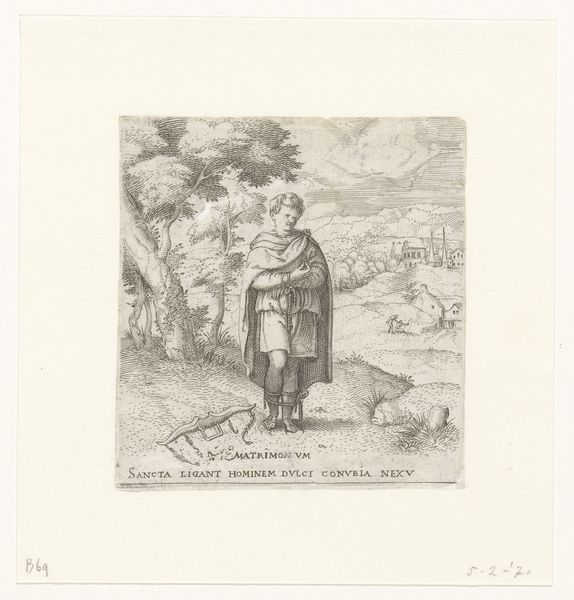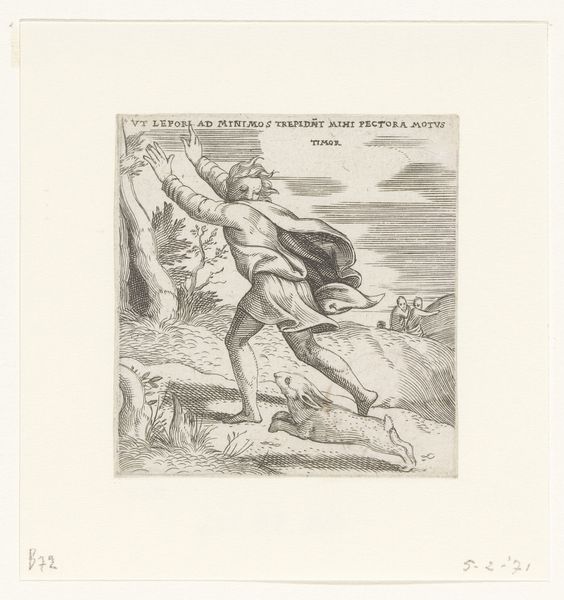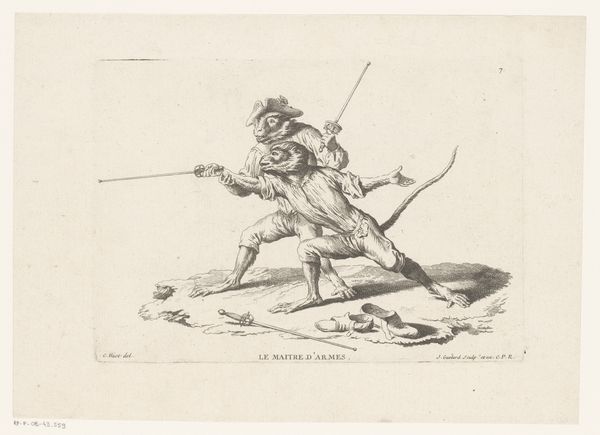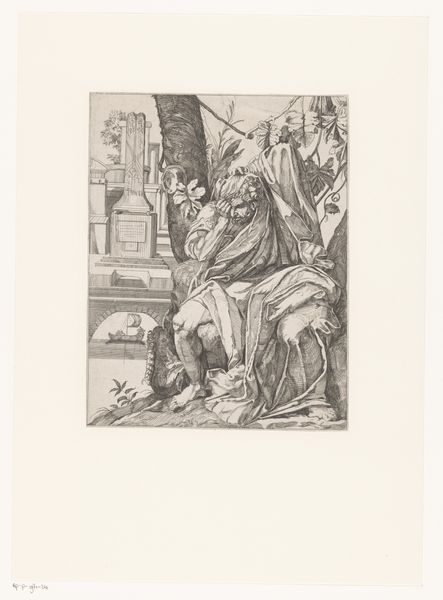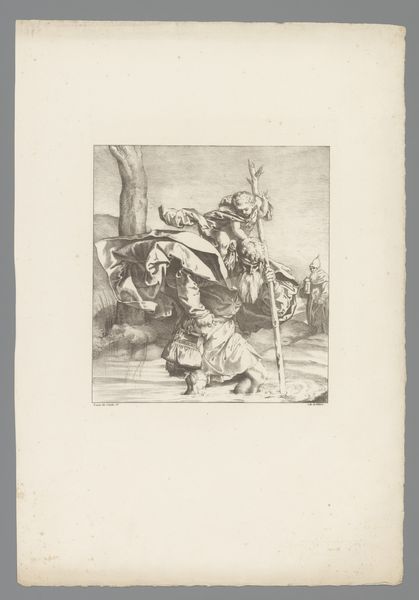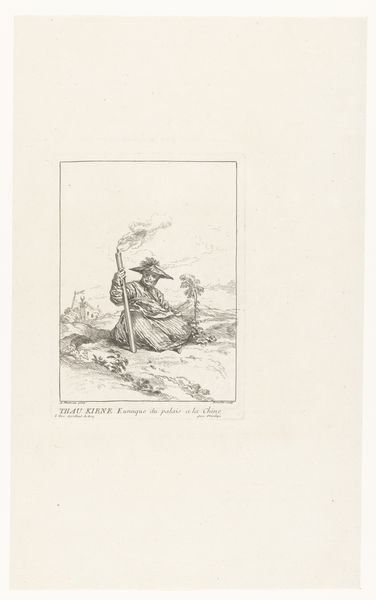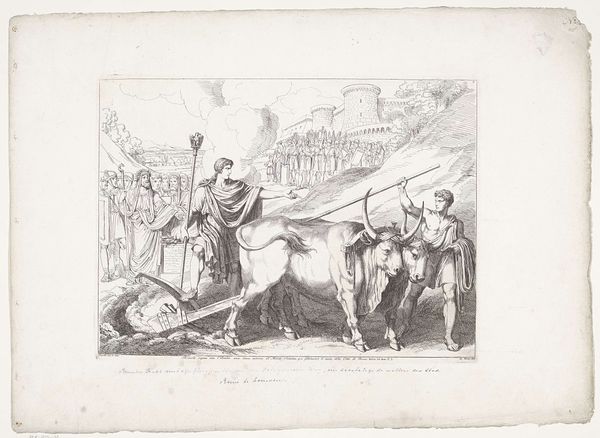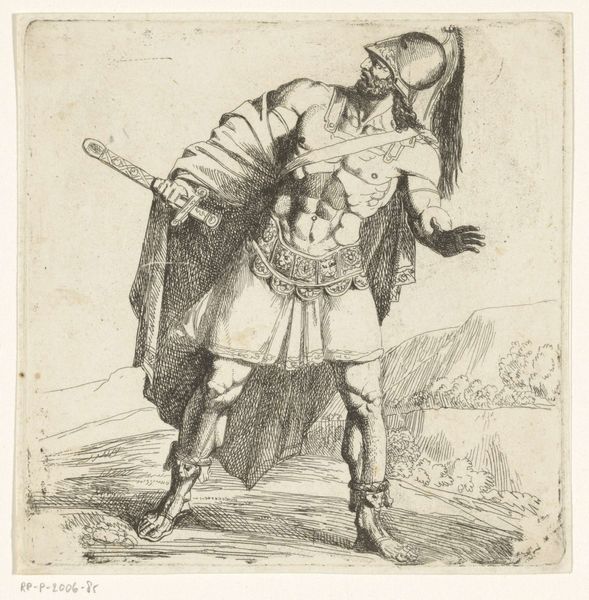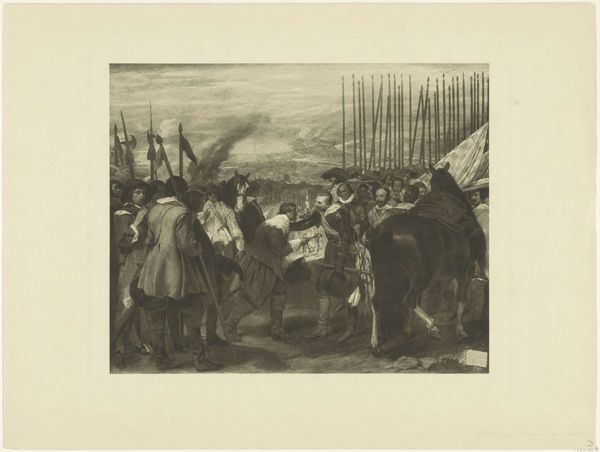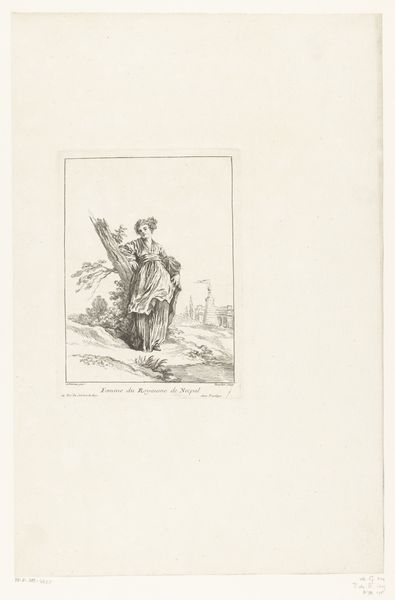
print, engraving
#
portrait
# print
#
old engraving style
#
figuration
#
line
#
history-painting
#
italian-renaissance
#
engraving
Dimensions: height 74 mm, width 76 mm
Copyright: Rijks Museum: Open Domain
Editor: This is "Ballingschap," or "Exile" in English, an engraving made sometime between 1533 and 1567 by Enea Vico. It's quite small, and rendered with such fine lines! What I notice right away is this central figure, this bearded man holding a bird. How would you interpret this piece? Curator: This image pulses with symbolic resonance. Exile itself is not merely physical displacement, but a severance from identity, history, and belonging. The man's clothing suggests a certain status, perhaps even royalty, now stripped bare. Consider the bird; what does it signify to you? Editor: I suppose the bird on his wrist is a falcon. Maybe it signifies the freedom that he no longer has, or the high status that has been stripped away, like you said? Curator: Precisely! Falcons often symbolized nobility and freedom. The bird's captivity with him can suggest a loss of status or power, a kind of shared fate. The Latin inscription "EXTORRIS PATRIAM DVLCESQ[UE] REUNQVO PENATES EXILIVM" tells us he is banished from his fatherland. What emotions do you feel as you look at this image? Editor: Sadness and maybe some empathy? I see a fallen man, no longer who he once was. He's in exile, without a home. Curator: Exactly. The engraving captures the somber reflection on loss of home, status and identity. But in art historical symbolism there is also endurance. What survives loss? Consider the symbolic power of exile as a test to character and perseverance, perhaps even rebirth. Editor: It is interesting to see how the symbolism elevates the artwork, layering new insights. Curator: Agreed, reflecting upon this historical image prompts deeper understanding, revealing the story behind visual language that art embodies and passes down over centuries.
Comments
No comments
Be the first to comment and join the conversation on the ultimate creative platform.
